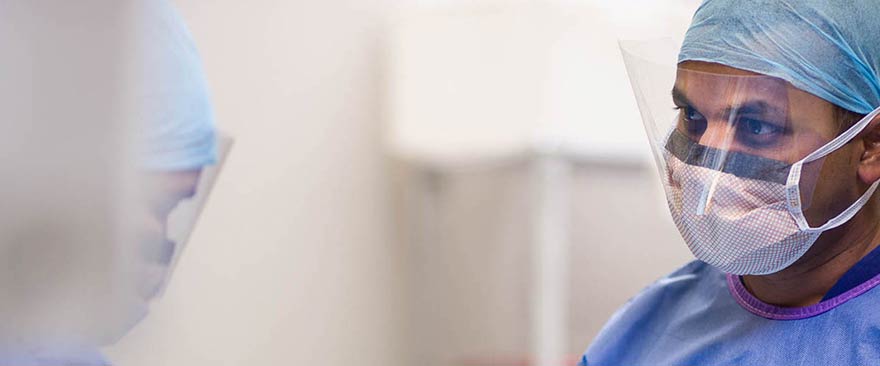Conditions
DRUJ stand for 'Distal Radio-ulnar Joint' . The radius and ulna bones in the forearm form a closed loop with a proximal joint at the elbow and a distal joint at the wrist. The DRUJ is stabilised primarily by the strong ligaments surrounding it and secondarily by the congruency of the bony surfaces. The associated group of ligaments that support this joint and allow the hand to rotate about the joint is called the 'triangular fibro-cartilaginous complex', or TFCC.
Problems with this joint are generally caused by either injury, from a fall on to an outstretched hand for example, or less frequently, arthritis in the joint. DRUJ instability can be caused either by fractures to the bones of the joint or by damage to components of the TFCC. DRUJ injury often coexists with the very common distal radius fracture. Most of these injuries are treated non-operatively with good result. When the injury to DRUJ or/and ligaments surrounding it is severe or symptomatic with pain or instability or both, surgery may be required.
Procedure
There are different surgical procedures used to correct DRUJ problems, and each is used depending on the pattern of injury, nature of condition and age of the patient. Procedures include:
- Ulna shortening osteotomy
- Ligament reconstruction
- DRUJ arthroplasty
- Distal ulna excision
Ulna shortening osteotomy
It involves the removal of a very small section of bone from the ulna bone close to the wrist followed by fixation with a plate. The effect of slightly shortening the ulna bone is to tighten the ligaments between the radius and ulna bones and so provide greater stability to the DRUJ. This procedure is particularly useful in individuals with a relatively longer ulna than the radius (called “Ulna plus”).
Ligament reconstruction
This procedure is one of the options to treat DRUJ instability; and often used in conjunction with an ulnar shortening osteotomy. Under either a regional anaesthetic or general anaesthetic, part of another tendon or part of the extensor retinaculum of the wrist is harvested and transferred to provide additional stability to the joint.
Distal ulna excision
This procedure is also known as 'Darrach’s Procedure', and is suitable in elderly patients where there is not likely to be larger amounts of stress or pressure put on the joint.
Distal ulna replacement
Also known as hemi arthroplasty, this relatively new approach involves the replacement of the end of the ulna bone with a metallic prosthesis.







